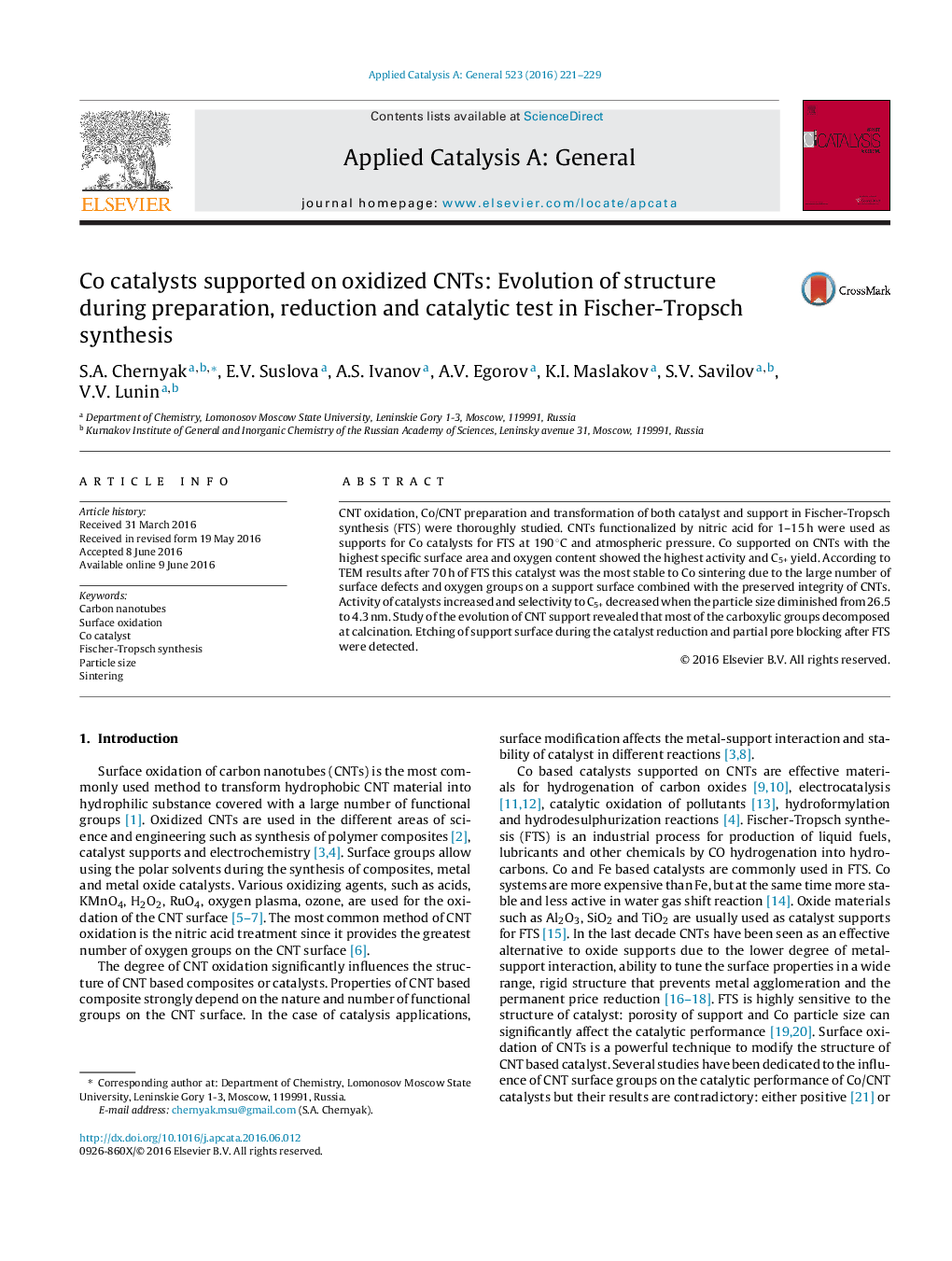| Article ID | Journal | Published Year | Pages | File Type |
|---|---|---|---|---|
| 38768 | Applied Catalysis A: General | 2016 | 9 Pages |
•Kinetics of CNT oxidation was studied.•Highest SBET and O content in CNTs promotes the best catalyst performance in FTS.•Surface geometry of CNT support affects Co stability stronger than functional groups.•Turnover frequency and activity show opposite dependencies on Co particle size.•CNT evolution during catalyst preparation, reduction and FTS was investigated.
CNT oxidation, Co/CNT preparation and transformation of both catalyst and support in Fischer-Tropsch synthesis (FTS) were thoroughly studied. CNTs functionalized by nitric acid for 1–15 h were used as supports for Co catalysts for FTS at 190 °C and atmospheric pressure. Co supported on CNTs with the highest specific surface area and oxygen content showed the highest activity and C5+ yield. According to TEM results after 70 h of FTS this catalyst was the most stable to Co sintering due to the large number of surface defects and oxygen groups on a support surface combined with the preserved integrity of CNTs. Activity of catalysts increased and selectivity to C5+ decreased when the particle size diminished from 26.5 to 4.3 nm. Study of the evolution of CNT support revealed that most of the carboxylic groups decomposed at calcination. Etching of support surface during the catalyst reduction and partial pore blocking after FTS were detected.
Graphical abstractFigure optionsDownload full-size imageDownload high-quality image (232 K)Download as PowerPoint slide
